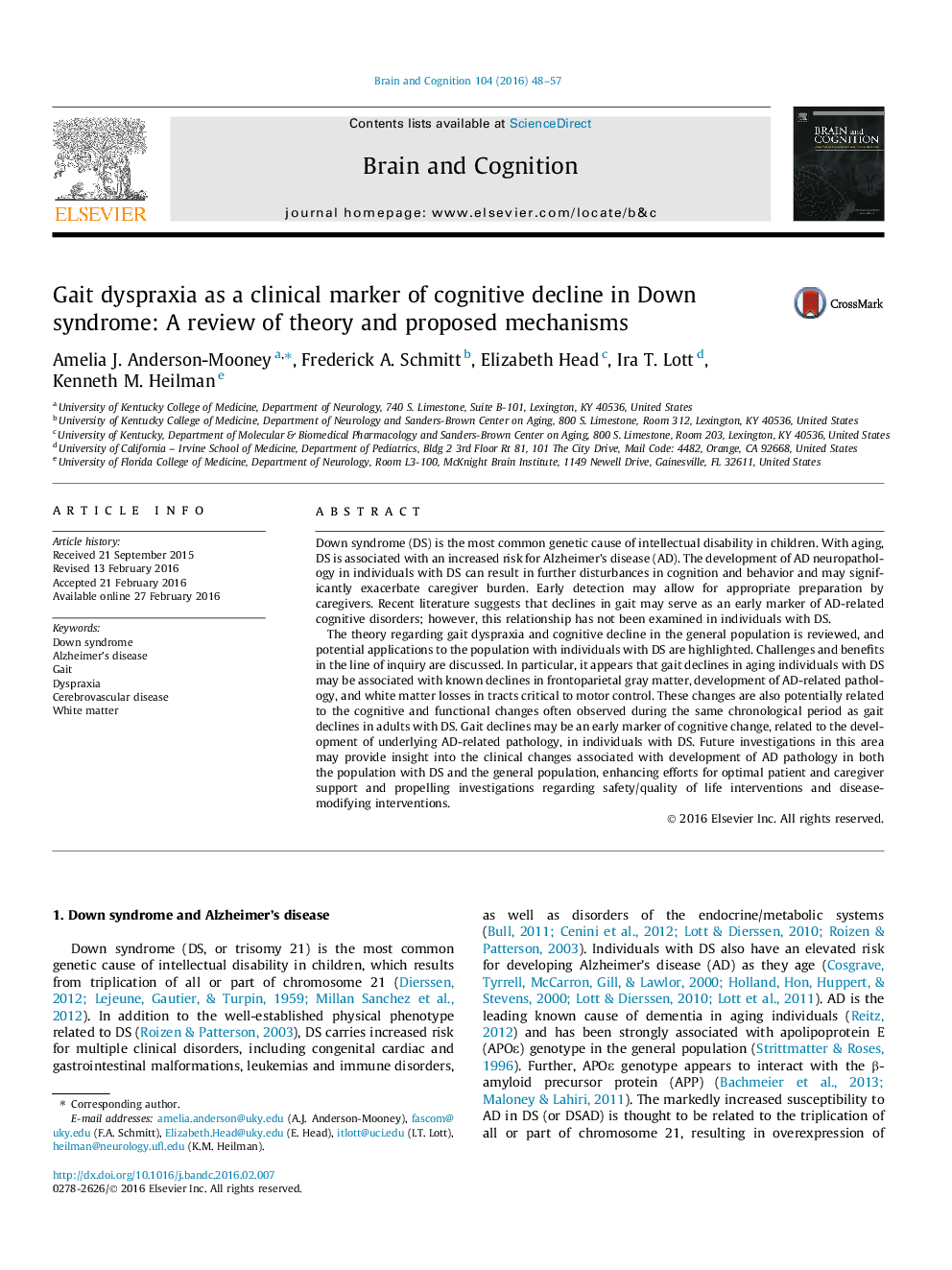| کد مقاله | کد نشریه | سال انتشار | مقاله انگلیسی | نسخه تمام متن |
|---|---|---|---|---|
| 924132 | 1473967 | 2016 | 10 صفحه PDF | دانلود رایگان |
• Alzheimer’s disease is common in individuals with Down syndrome (DS).
• Gait declines may be the earliest marker of neurodegenerative change.
• Adults with DS may experience gait declines differently than non-DS adults.
• Neuropathological changes in DS are thought to contribute significantly to gait declines.
Down syndrome (DS) is the most common genetic cause of intellectual disability in children. With aging, DS is associated with an increased risk for Alzheimer’s disease (AD). The development of AD neuropathology in individuals with DS can result in further disturbances in cognition and behavior and may significantly exacerbate caregiver burden. Early detection may allow for appropriate preparation by caregivers. Recent literature suggests that declines in gait may serve as an early marker of AD-related cognitive disorders; however, this relationship has not been examined in individuals with DS.The theory regarding gait dyspraxia and cognitive decline in the general population is reviewed, and potential applications to the population with individuals with DS are highlighted. Challenges and benefits in the line of inquiry are discussed. In particular, it appears that gait declines in aging individuals with DS may be associated with known declines in frontoparietal gray matter, development of AD-related pathology, and white matter losses in tracts critical to motor control. These changes are also potentially related to the cognitive and functional changes often observed during the same chronological period as gait declines in adults with DS. Gait declines may be an early marker of cognitive change, related to the development of underlying AD-related pathology, in individuals with DS. Future investigations in this area may provide insight into the clinical changes associated with development of AD pathology in both the population with DS and the general population, enhancing efforts for optimal patient and caregiver support and propelling investigations regarding safety/quality of life interventions and disease-modifying interventions.
Journal: Brain and Cognition - Volume 104, April 2016, Pages 48–57
